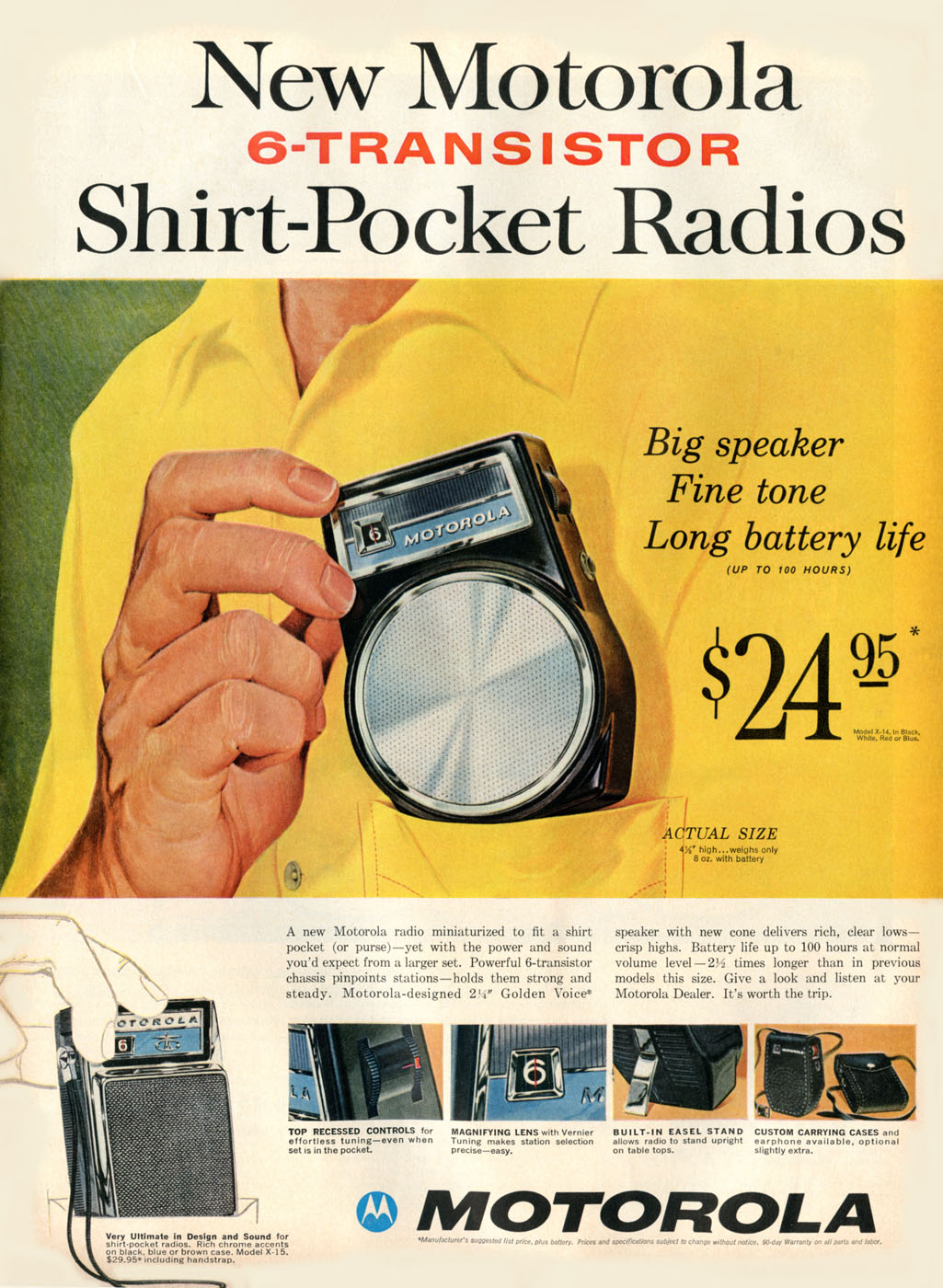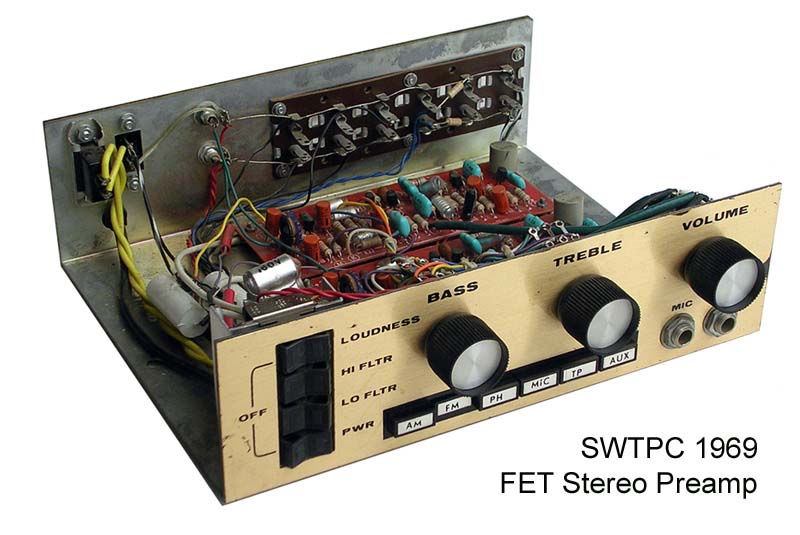|
SWTPC
Southwest Technical Products Corporation, or SWTPC, was an American producer of electronic kits, and later complete computer systems. It was incorporated in 1967 in San Antonio, Texas, succeeding the Daniel E. Meyer Company. In 1990, SWTPC became Point Systems, before ceasing a few years later. History In the 1960s, many hobbyist electronics magazines such as ''Popular Electronics'' and ''Radio-Electronics'' published construction articles, for many of which the author would arrange for a company to provide a kit of parts to build the project. Daniel Meyer published several popular projects and successfully sold parts kits. He soon started selling kits for other authors such as Don Lancaster and Louis Garner. Between 1967 and 1971, SWTPC sold kits for over 50 ''Popular Electronics'' articles. Most of these kits were intended for audio use, such as hi-fi, utility amplifiers, and test equipment such as a function generator based on the Intersil ICL8038. Many of these early ... [...More Info...] [...Related Items...] OR: [Wikipedia] [Google] [Baidu] |
SWTPC 6800
The SWTPC 6800 Computer System, simply referred to as SWTPC 6800, is an early microcomputer developed by the Southwest Technical Products Corporation and introduced in 1975. It was built around the Motorola 6800 microprocessor, from which it gets its name. The SWTPC 6800 was one of the first microcomputers based around the Motorola 6800. The SWTPC 6800 is the progenitor of the widely used and broadly supported SS-50 bus. The SWTPC 6800 became one of the most popular 6800-based systems of its time, owing to its ease of use and ample documentation. Though rudimentary, the MIKBUG resident monitor built into ROM allows the immediate entry of program data after power-up, as opposed to other microcomputers of its day which required bootstrapping such software. Southwest Technical Products introduced the SWTPC 6800 in November 1975 for US$450 () in kit form only. Any contemporary ASCII terminal can be used to interface with the SWTPC 6800. SWTPC sold their own television-set-based te ... [...More Info...] [...Related Items...] OR: [Wikipedia] [Google] [Baidu] |
Motorola 6800
The 6800 ("''sixty-eight hundred''") is an 8-bit microprocessor designed and first manufactured by Motorola in 1974. The MC6800 microprocessor was part of the M6800 Microcomputer System (later dubbed ''68xx'') that also included serial and parallel interface ICs, RAM, ROM and other support chips. A significant design feature was that the M6800 family of ICs required only a single five-volt power supply at a time when most other microprocessors required three voltages. The M6800 Microcomputer System was announced in March 1974 and was in full production by the end of that year. "Motorola's M6800 microcomputer system, which can operate from a single 5-volt supply, is moving out of the sampling stage and into full production." The small-quantity price of the MC6800 is . The MC6820 PIA cost . American Microsystems was licensed as the second source. The 6800 has a 16-bit address bus that can directly access of memory and an 8-bit bi-directional data bus. It has 72 instructions with ... [...More Info...] [...Related Items...] OR: [Wikipedia] [Google] [Baidu] |
SS-50 Bus
The SS-50 bus was an early computer bus designed as a part of the SWTPC 6800 Computer System that used the Motorola 6800 CPU. The SS-50 motherboard would have around seven 50-pin connectors for CPU and memory boards plus eight 30-pin connectors for I/O boards. The I/O section was sometimes called the SS-30 bus. Southwest Technical Products Corporation introduced this bus in November 1975 and soon other companies were selling add-in boards. Some of the early boards were floppy disk systems from Midwest Scientific Instruments, Smoke Signal Broadcasting, and Percom Data; an EPROM programmer from the Micro Works; video display boards from Gimix; memory boards from Seals. By 1978 there were a dozen SS-50 board suppliers and several compatible SS-50 computers. In 1979 SWTPC modified the SS-50 bus to support the new Motorola MC6809 processor. These changes were compatible with most existing boards and this upgrade gave the SS-50 Bus a long life. SS-50 based computers were made un ... [...More Info...] [...Related Items...] OR: [Wikipedia] [Google] [Baidu] |
Daniel Meyer (engineer)
Daniel Meyer (February 6, 1932 – May 16, 1998) was the founder and president Southwest Technical Products Corporation. He was born in New Braunfels, Texas, and raised in San Marcos, Texas, where he earned a bachelor's degree in mathematics and physics in 1957 from Southwest Texas State. After college he married Helen Wentz, moved to San Antonio and became a research engineer in the electrical engineering department of Southwest Research Institute. He soon started writing hobbyist articles. The first was in ''Electronics World'' (May 1960) and later he had a two part cover feature for ''Radio-Electronics'' (October, November 1962). The author is Daniel Meyer, Research Engineer at Southwest Research Institute. Circuit boards could be ordered from Dan's home at 430 Redclift Drive in San Antonio, Texas. The article was continued in the November 1962 issue. The March 1963 issue of ''Popular Electronics'' featured his ultrasonic listening device on the cover. The projects woul ... [...More Info...] [...Related Items...] OR: [Wikipedia] [Google] [Baidu] |
CT-1024
The TV Typewriter is a video terminal that could display two pages of 16 lines of 32 upper case characters on a standard television set. The design, by Don Lancaster, appeared on the cover of ''Radio-Electronics'' magazine in September 1973. The magazine included a 6-page description of the design but readers could send off for a 16-page package of construction details. ''Radio-Electronics'' sold thousands of copies for $2.00 each. The TV Typewriter is considered a milestone in the home computer revolution along with the Mark-8 and Altair 8800 computers. "A giant step toward the realization of the personal-computer dream happened in 1973, when Radio Electronics published an article by Don Lancaster that described a 'TV Typewriter'.""One influential project was the TV-Typewriter, designed by Don Lancaster and published in ''Radio-Electronics'' in September 1973." Sometimes the term was used generically for any interactive computer display on a screen; until CRT displays were develo ... [...More Info...] [...Related Items...] OR: [Wikipedia] [Google] [Baidu] |
Popular Electronics
''Popular Electronics'' was an American magazine published by John August Media, LLC, and hosted at TechnicaCuriosa.com. The magazine was started by Ziff-Davis Publishing Company in October 1954 for electronics hobbyists and experimenters. It soon became the "World's Largest-Selling Electronics Magazine". In April 1957, Ziff-Davis reported an average net paid circulation of 240,151 copies. ''Popular Electronics'' was published until October 1982 when, in November 1982, Ziff-Davis launched a successor magazine, ''Computers & Electronics''. During its last year of publication by Ziff-Davis, ''Popular Electronics'' reported an average monthly circulation of 409,344 copies. The title was sold to Gernsback Publications, and their ''Hands-On Electronics'' magazine was renamed to ''Popular Electronics'' in February 1989, and published until December 1999. The Popular Electronics trademark was then acquired by John August Media, who revived the magazine, the digital edition of which is ho ... [...More Info...] [...Related Items...] OR: [Wikipedia] [Google] [Baidu] |
Motorola 6809
The Motorola 6809 ("''sixty-eight-oh-nine''") is an 8-bit microprocessor with some 16-bit features. It was designed by Motorola's Terry Ritter and Joel Boney and introduced in 1978. Although source compatible with the earlier Motorola 6800, the 6809 offered significant improvements over it and 8-bit contemporaries like the MOS Technology 6502, including a hardware multiplication instruction, 16-bit arithmetic, system and user stack registers allowing re-entrant code, improved interrupts, position-independent code, and an orthogonal instruction set architecture with a comprehensive set of addressing modes. The 6809 was among the most powerful 8-bit processors of its era. It was also among the most expensive; in 1981 single-unit quantities were compared to for a Zilog Z80 and for a 6502. It was launched when a new generation of 16-bit processors were coming to market, like the Intel 8086, and 32-bit designs were on the horizon, including Motorola's own 68000. It was not feature ... [...More Info...] [...Related Items...] OR: [Wikipedia] [Google] [Baidu] |
Microcomputer
A microcomputer is a small, relatively inexpensive computer having a central processing unit (CPU) made out of a microprocessor. The computer also includes memory and input/output (I/O) circuitry together mounted on a printed circuit board (PCB). Microcomputers became popular in the 1970s and 1980s with the advent of increasingly powerful microprocessors. The predecessors to these computers, mainframes and minicomputers, were comparatively much larger and more expensive (though indeed present-day mainframes such as the IBM System z machines use one or more custom microprocessors as their CPUs). Many microcomputers (when equipped with a keyboard and screen for input and output) are also personal computers (in the generic sense). An early use of the term "personal computer" in 1962 predates microprocessor-based designs. ''(See "Personal Computer: Computers at Companies" reference below)''. A "microcomputer" used as an embedded control system may have no human-readable input and ... [...More Info...] [...Related Items...] OR: [Wikipedia] [Google] [Baidu] |
Subsidiary Communications Authority
Subsidiary Communications Authorization (SCA) in the United States, and Subsidiary Communications Multiplex Operation (SCMO) in Canada, is a subcarrier on a radio station, allowing the station to broadcast additional services as part of its signal. Background ''Subsidiary Communications Authorization'' is the United States Federal Communications Commission's official designation for this type of service. SCA was deregulated in 1983; since then, both AM and FM licensed broadcast stations have been allowed to use subcarriers in the United States in general without requiring separate authority; authorization is only required for some uses which are still otherwise regulated, such as common carrier or Land Mobile Radio Service transmissions. The fidelity (bandwidth) of SCA channels on FM is generally quite limited compared to that of the main program material, resulting in audio quality similar to AM radio broadcasting. By extension, the already limited bandwidth of AM means that i ... [...More Info...] [...Related Items...] OR: [Wikipedia] [Google] [Baidu] |
Central Processing Unit
A central processing unit (CPU), also called a central processor, main processor, or just processor, is the primary Processor (computing), processor in a given computer. Its electronic circuitry executes Instruction (computing), instructions of a computer program, such as arithmetic, logic, controlling, and input/output (I/O) operations. This role contrasts with that of external components, such as main memory and I/O circuitry, and specialized coprocessors such as graphics processing units (GPUs). The form, CPU design, design, and implementation of CPUs have changed over time, but their fundamental operation remains almost unchanged. Principal components of a CPU include the arithmetic–logic unit (ALU) that performs arithmetic operation, arithmetic and Bitwise operation, logic operations, processor registers that supply operands to the ALU and store the results of ALU operations, and a control unit that orchestrates the #Fetch, fetching (from memory), #Decode, decoding and ... [...More Info...] [...Related Items...] OR: [Wikipedia] [Google] [Baidu] |
Microprocessor
A microprocessor is a computer processor (computing), processor for which the data processing logic and control is included on a single integrated circuit (IC), or a small number of ICs. The microprocessor contains the arithmetic, logic, and control circuitry required to perform the functions of a computer's central processing unit (CPU). The IC is capable of interpreting and executing program instructions and performing arithmetic operations. The microprocessor is a multipurpose, Clock signal, clock-driven, Processor register, register-based, digital integrated circuit that accepts binary code, binary data as input, processes it according to instruction (computing), instructions stored in its computer memory, memory, and provides results (also in binary form) as output. Microprocessors contain both combinational logic and sequential logic, sequential digital logic, and operate on numbers and symbols represented in the binary number system. The integration of a whole CPU on ... [...More Info...] [...Related Items...] OR: [Wikipedia] [Google] [Baidu] |








